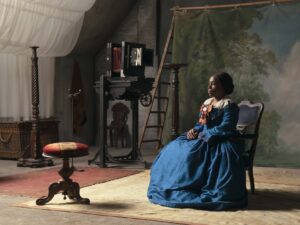“A photographer can be a storyteller. Images of experience captured on film, when put together like words, can weave tales of feeling and emotion as bold as literature.” – Philip Brookman in Gordon Parks: Half Past Autumn, 1997.
In June 1961, Life magazine published a 12-page piece titled Freedom’s Fearful Foe: Poverty. Captured by Gordon Parks (1912-2006) in Brazil, the photo essay followed Flávio da Silva, an industrious, severely asthmatic boy from a working-class neighborhood in Rio de Janeiro. Over the course of several weeks, Parks photographed his daily life, detailing his household chores and interactions with seven brothers and sisters – activities that were often interrupted by debilitating asthma attacks. The coverage touched audiences around the world and sparked controversy in Brazil, leading to Flávio’s treatment at the Children’s Asthma Research Institute and Hospital in Denver, Colorado. More than 100 works, chronicling events over several decades, are now part of Gordon Parks: The Flávio Story at J. Paul Getty Museum, Los Angeles.
The series is part of Parks’ wider body of work, which responded to social and political injustice through a personal lens. He was the first African-American staff photographer at Life, and contributed numerous powerful visual essays showing the poverty, violence and oppression that defined the years from 1940 to 1950. “Parks’ photographs chronicling social justice, civil rights, and the African-American experience in the US are both a vital historical document and a compelling body of artistic work,” says Timothy Potts, Director of the J. Paul Getty Museum. Of all his varied projects, Parks considered the photographs of Flávio – and their enduring impact – amongst his most important achievements. It was a deeply personal and emotional body of work, tapping into the photographer’s own experience of poverty in Kansas.
Over the years, Parks periodically returned to Flávio as a subject. In 1976, he published an updated story. Through words and images, it also provided insight into the practitioner’s conflicted engagement with certain photographic assignments. Co-curator Amanda Maddox explains: “He consciously wielded his camera as a weapon – his chosen term – in an attempt to combat economic and racial inequality. His documentation of Flávio da Silva reveals the complexity of his empathetic approach and the inherent difficulties of representing someone else’s personal story – that resonated with many people over many years – in any form.”
The exhibition runs 9 July – 10 November. Find out more here.
Lead image: Catacumba Favela, Rio de Janeiro, Brazil, 1961.





